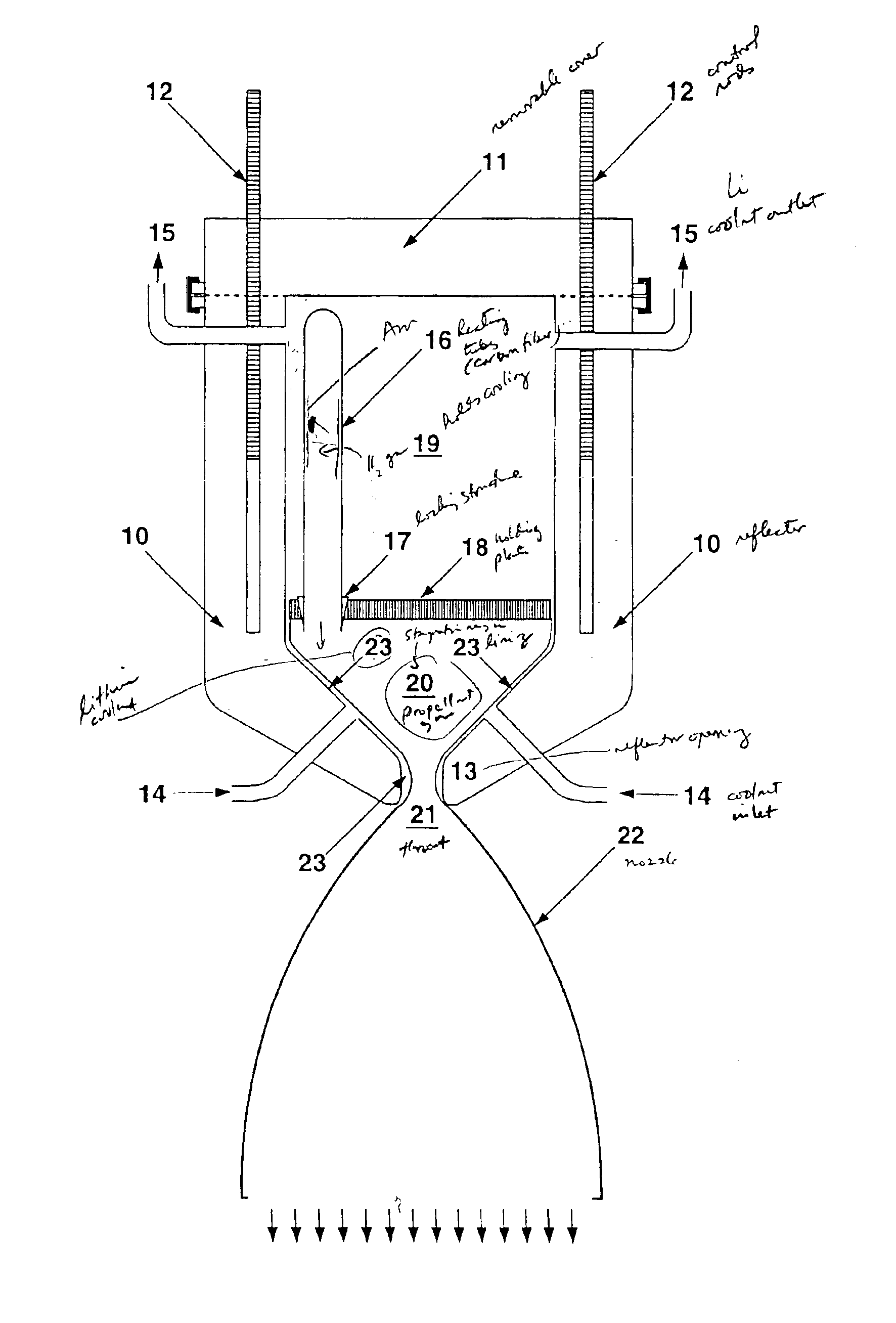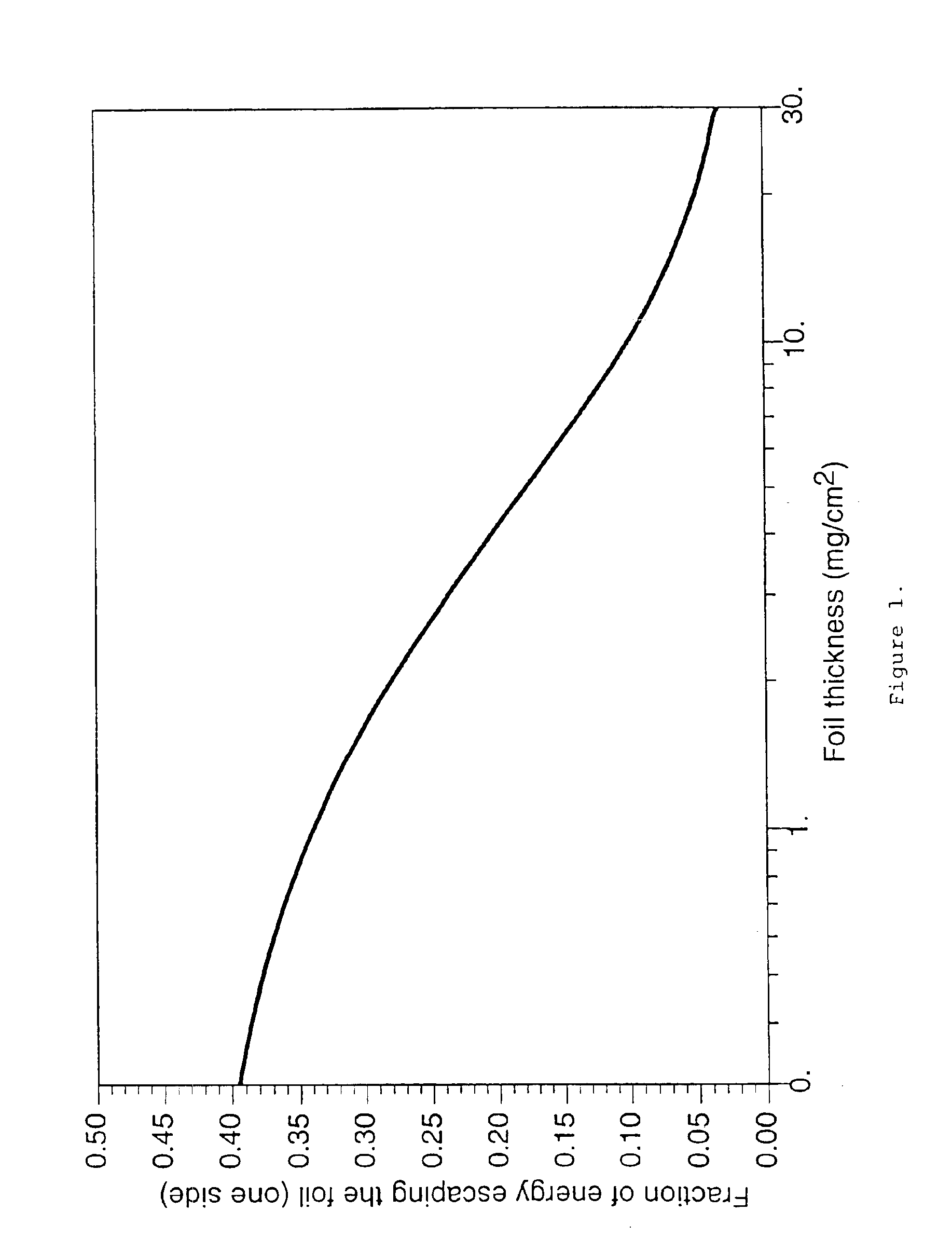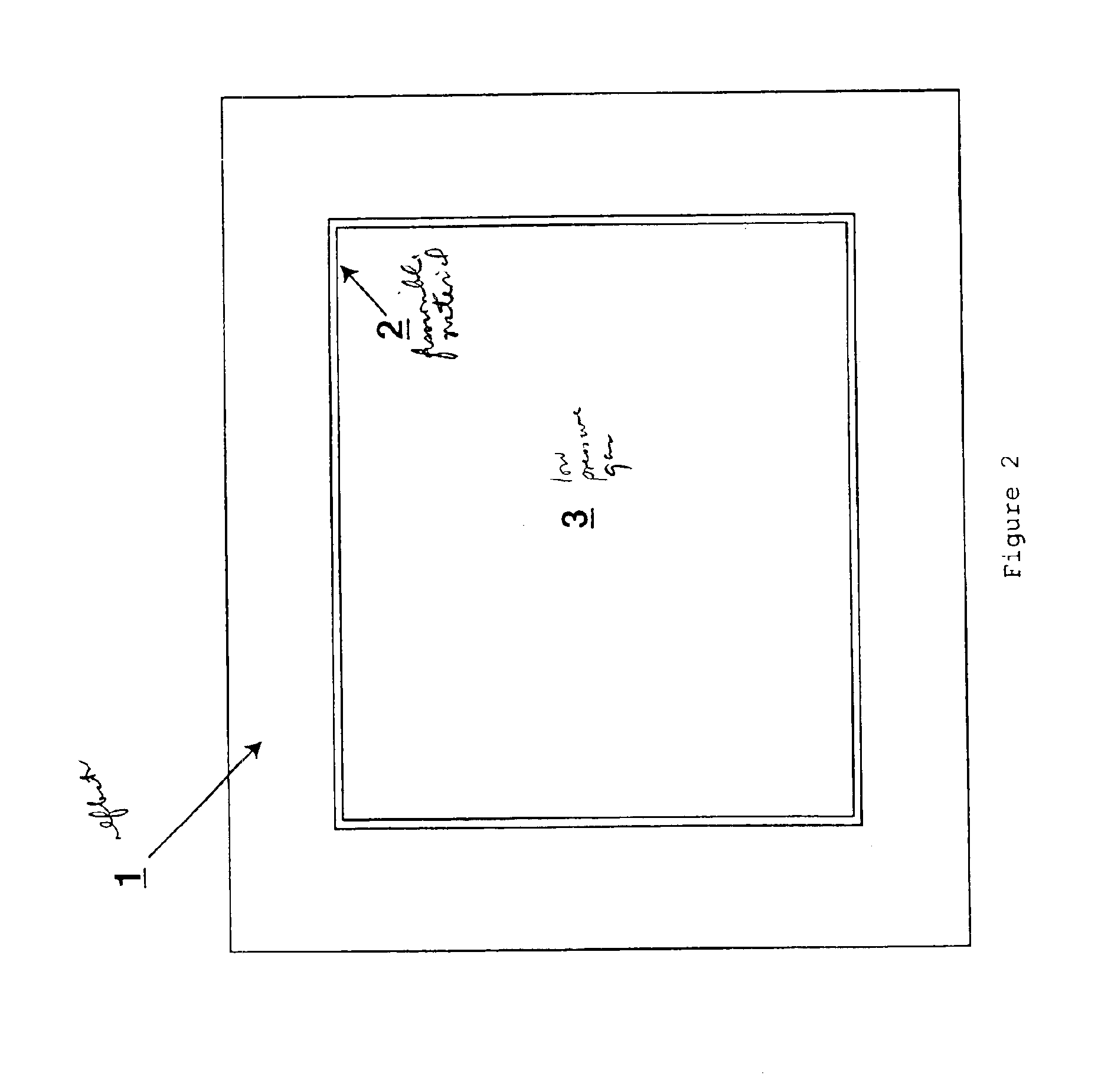Device for heating gas from a thin layer of nuclear fuel, and space engine incorporating such device
a technology of nuclear fuel and heating gas, which is applied in the direction of nuclear elements, machines/engines, greenhouse gas reduction, etc., can solve the problems of limited mechanical strength, large amount of energy potentially available through fission process, and temperature of propellant gas
- Summary
- Abstract
- Description
- Claims
- Application Information
AI Technical Summary
Benefits of technology
Problems solved by technology
Method used
Image
Examples
Embodiment Construction
1.—Fission Fragment Heating
The well known neutron induced fission reaction is the preferred source of nuclear energy because of its high energy yield and its ability of sustaining a chain reaction based on neutrons. In this reaction, the initial nucleus is split into two fission fragments (FF) and a number of neutrons (≧2) which are necessary to continue the chain reaction. The average energy sharing in a typical fission reaction is such that a major proportion—namely 168 MeV / 191 MeV=88%—of the usable energy (neutrinos are excluded) is produced in the form of kinetic energy by the pair of FF. The fragments of father nucleus being split away beyond the range of the (attractive) nuclear forces, energy is produced by the strong electrostatic repulsion between the two fragments—the rest being de-excitation of the nuclear levels with gamma and neutron emission, possibly followed by β de-excitation.
FF travel a very short way in the fissionable fuel, delivering energy in the form of heat i...
PUM
 Login to View More
Login to View More Abstract
Description
Claims
Application Information
 Login to View More
Login to View More - R&D
- Intellectual Property
- Life Sciences
- Materials
- Tech Scout
- Unparalleled Data Quality
- Higher Quality Content
- 60% Fewer Hallucinations
Browse by: Latest US Patents, China's latest patents, Technical Efficacy Thesaurus, Application Domain, Technology Topic, Popular Technical Reports.
© 2025 PatSnap. All rights reserved.Legal|Privacy policy|Modern Slavery Act Transparency Statement|Sitemap|About US| Contact US: help@patsnap.com



